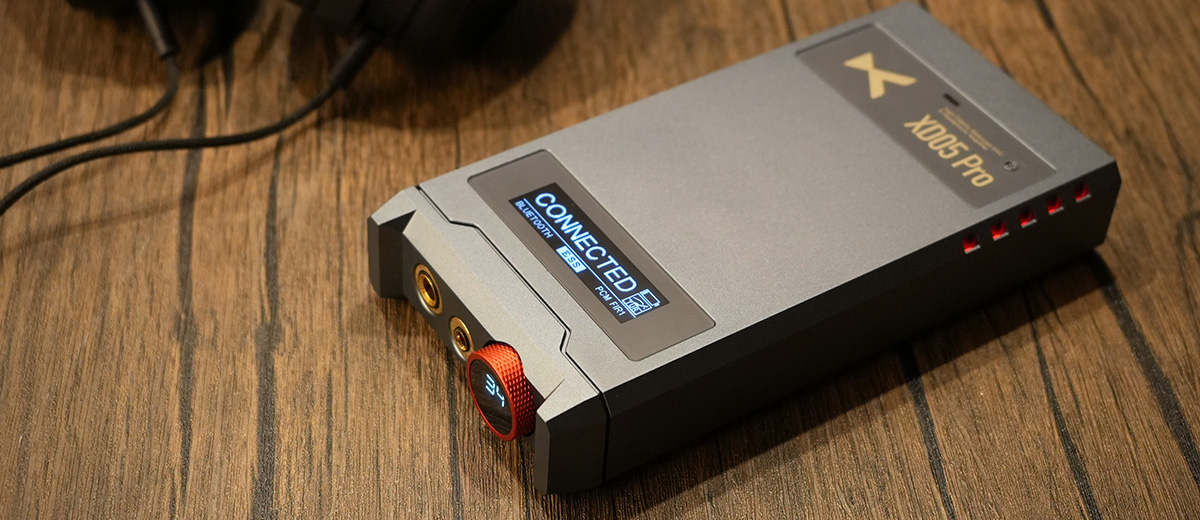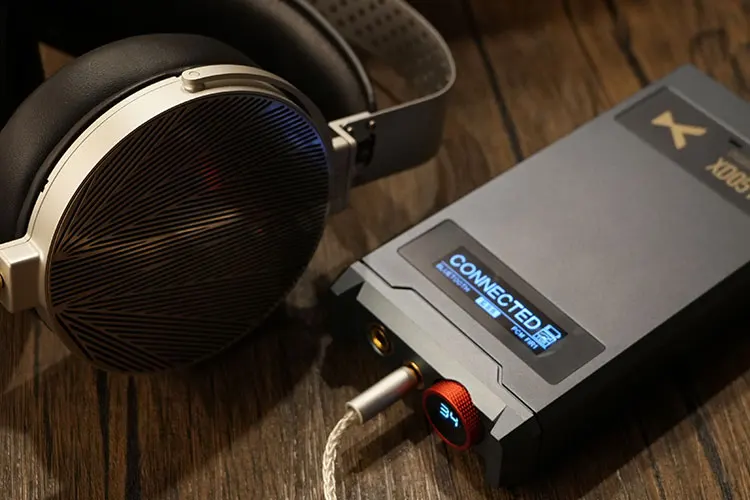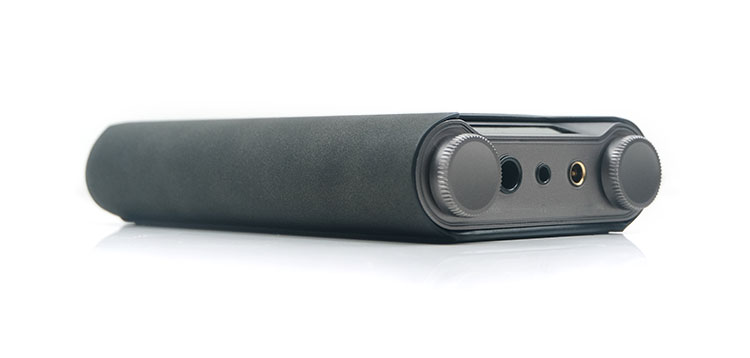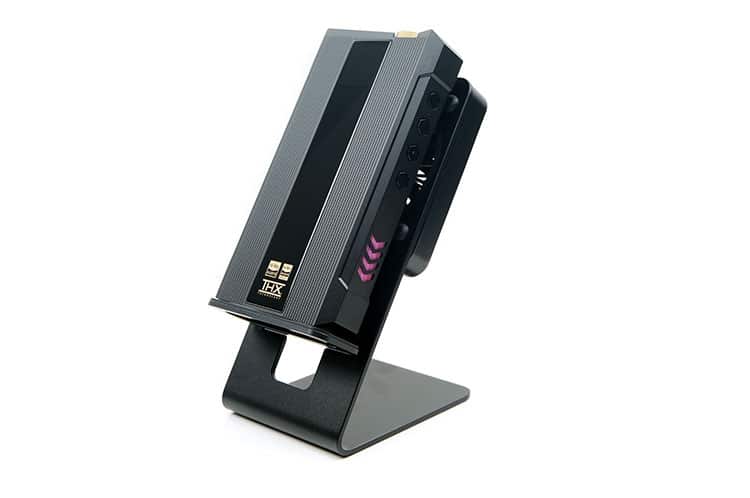Synergy
Efficiency
When using sensitive IEMs with the XD05 Pro, even on the middle gain setting, the output remains free from noise listening outdoors.
As the noise floor on the swappable units (such as op-amps) is at a similar level, users are unlikely to hear background hisses. At the same time, the low output impedance ensures efficiency in pairing with IEMs of lower impedance ratings.
Power
The high output power allows the XD05 Pro to sound energetic and clear with various headphones. The stock configuration with LME49720 op-amps has better synergy with the more power-demanding loads under Turbo mode, which smooths out sibilance and enhances dynamics.
Under ECO mode it can drive IEMs of lower impedance efficiently, though it may not sound as full and dynamic as compared to the other power-demanding gears.
I expect the above performance to be enhanced with the upcoming modules as the ESS + LME49720 combo feels too clean and flat in tone and somehow compromises textures in the mid-low.
On another note, the external power supply mode with Turbo gain on yields better performance, which further polishes the vocal to sound lusher and more natural, by taking away unwanted sibilance in the upper-frequency range while strengthening dynamics slightly.
Pairings
The Turbo gain mode on the XD05 Pro provides strong voltage swing, allowing it to effortlessly drive headphones and IEMs of higher impedance, enhancing clarity and ensuring the stage sounds expansive on average headphones.
Headphones with cooler tonality may sound quite sharp on both normal and turbo gain modes. While warmer-toned headphones, especially those with a higher impedance rating tend to pair better on the XD05 Pro. The sufficient power allows the bass to extend more spatially and to sound more engaging.
Albeit the output impedance is quite low and there is an ECO mode, with sensitive IEMs it sounds quite forwarded in the upper mids with both op-amps supplied.
The XD05 Pro struggles to sound as dynamic and controlled in this case as with higher impedance headphones and IEMs, for example, the Westone MACH 80, which has a full-bodied and airy presentation.
When paired with less sensitive/current demanding gear like the HD 800 and Moondrop Venus, the XD05 Pro can deliver good dynamics and satisfactory control.
However, it may not reproduce the mid-bass delicately due to the character of the decoder and op-amp choice, though there is good air and again, a solid punch. When playing fast orchestral music, you may notice that the micro-details in the mid-bass struggle to keep up, and the transient response is not as strong.
Again, when swapping between components the signature changes quite noticeably and I am expecting different results with the other decoding modules or op-amps that may sound more delicate and stereophonic. We will test if this is true in a separate review later.
Select Comparisons
Shanling H7
Technical
The Shanling H7 features the AK4499EX DAC chips, capable of decoding up to DSD512 and PCM 32BIT/768kHz. It utilizes the XMOS XU316 USB solution and offers LDAC 24BIT/96kHz wireless decoding.
The H7 also includes coaxial and optical SPDIF inputs with maximum decoding capabilities of 192kHz/24BIT and 96kHz/24BIT respectively. In terms of amplification power, the H7 provides up to 1300mW @32Ω through its balanced output with a high-gain setting.
The Shanling H7 offers a convenient feature of local playback music files directly from the microSD card. You can control the playback through a small menu-based LCD screen and multifunctional dials located on the front panel.
While it may not offer a DC-powered option like the FiiO Q7 or the XD05 Pro, it delivers impressive power output comparable to other high-end devices considering its smaller size.
Design
The Shanling H7 is more compact and lighter, measuring 142 x 85 x 25 mm and weighing 352g. Similar to the XD05 Pro, the key I/O’s are positioned at the back, and there is an RCA output jack for connecting to speakers, allowing the device to be used as a decoder or preamp.
This feature is lacking on the XD05 Pro. However, in return, the XD05 Pro offers more input options, such as AES, and supports 4.4mm analog input for use as an amplifier.
As for the build, the machining quality of the Shanling H7 is superior, and its overall design is cleaner. On the other hand, the XD05 Pro has more parts that enable the interchangeable components to function.
Additionally, it features a dual screen that separately displays the playback information and volume.
Performance
When listening at higher volumes with headphones or high-impedance IEMs, the XD05 Pro demonstrates superior distortion control while providing even more power through its balanced output, though the tuning feels rawer. It delivers 2000mW at 32ohm, compared to the H7’s 1300mW at 32Ω.
By using the Moondrop Venus and PARA to test, the XD05 Pro produces tighter and cleaner bass reproduction on both 4.4mm and 3.5mm outputs.
Additionally, the XD05 Pro excels in handling stronger dynamics and volume changes without peaking or flattening the output, particularly when paired with the Venus and connected to an external power source.
Generally, with IEMs in particularly sensitive ones, the H7 sounds coherent, more relaxed, controlled, and natural, which helps sharper-sounding IEMs to sound more mellow and swift in the vocal.
The XD05 Pro outlines the midrange with better clarity and stretches the stage bigger with its ample power, at the same time pushing the vocal more upfront with enhanced clarity, though it seems to lack the fine control and bass layering as heard on the H7.
That being said, the H7 pairs better with IEMs that are more sensitive and have stronger detail retrieval power but may struggle with higher loads to sound as powerful and clean. Comparatively, the XD05 Pro has better technicalities to drive dynamics driver designs and higher impedance IEMs full and punchy.
When comparing the XD05 Pro with the H7 in terms of headphone pairing performance, the XD05 Pro’s higher power and elevated mid-treble frequencies provide it with a clear advantage in terms of creating an airier and more expanded soundstage.
In contrast, the H7 maintains respectable resolving power and dynamics while offering a more relaxing and sibilance-free signature, suppressing unwanted nasal and harsh tones in the vocals.
FiiO Q7
Technical
The FiiO Q7 released in 2022 still shines in late 2023 with its capability to output as high as 3W on external power, though it may get considerably hotter. It adopts the ESS ES9038PRO decoding chipset and supports DSD512 and PCM decoding up to 32-bit/768kHz, with 8X MQA unfold power.
There are dual THX AAA 788+ amplifiers inside rated <1.2Ω in output impedance for SE output and <2.2Ω for balanced in DC mode. Using its battery, it can output 1.5W into a 32Ω balanced load and a 550mW single-ended 32Ω load.
Design
Neglect the color scheme and you may find the hexagonal design elements on both devices and light signals sharing some similarities. The XD05 Pro puts the light on both sides and it changes with the gain mode, which I find more appealing and interactive.
There is only a small screen on top of the Q7 like FiiO’s other small BT receivers, compared to the XD05 Pro’s large and dual-screen layout, and the bigger screen is easier to read.
One design flaw on the Q7 is that it shares the same USB-C port for decoding and charging. The XD05 Pro allows connecting separately the power supply and USB cable to the source, which is more flexible.
Comprehensively the FiiO Q7 has a more professional and mature outlook that is extended from its M series players with a honeycomb-shaped design theme, while the XD05 Pro is geekier and more flexible with all the swappable features.
Performance
Comparing the two devices on their batteries, the Q7 with THX AAA 788+ module offers stronger bass transients to IEMs, giving more body and snappier punch to the bass.
There is also a deeper extension into the subs that heightens the headroom perceived. The XD05 Pro is smoother and softer in decay while being as prominent in bass quantity, such makes it more engaging and airier with bass instruments, but it may not be as resolving as the Q7 testing with IEMs when more instruments come into play.
With headphones that require more power, the bass punches lighter and cleaner on the Q7 and the XD05 Pro empowers the vocal with more thickness, which gives the vocal more power and bass instruments a stronger presence.
The Q7 still sounds more precise, balanced, and controlled, and showcases good layering for complex bass lines, and the XD05 Pro feels more open up, clear, and fun in signature.
Both devices render the midrange frequencies smoothly, with the XD05 Pro standing out with its slightly stronger separation power, resulting in more pronounced upper mids. This characteristic enhances the dynamics when listening to genres like pop and jazz.
On the other hand, the Q7 offers a textured and coherent signature in the midrange, providing vocals with more bite while introducing a touch of honkiness, and it works well with classical music and piano pieces.
The vocal reproduction on the Q7, although less expressive, feels less altered compared to the XD05 Pro. The Q7 maintains a slightly more conservative yet controlled sound profile, showcasing precise imaging and superior tonal balance across the midrange.
The treble on the Q7 is more protruded testing with different gears, so it sounds more vivid with IEMs or headphones that are more rounded, depending on its sensitivity.
Our Verdict
The xDuoo XD05 Pro is a truly unique portable amp and DAC with the ability not only to change the amplifier cards but also the DAC separately giving you a multitude of performance options.
It has the guts to deliver excellent power to both planar and high-impedance headphones alike and the deftness to handle IEMs similarly. With the onboard DAC, you can also integrate it into a wider home system with ease.
The stock tuning is slightly on the clean and dry side, and if you don’t like that well there are other cards you might find more suitable for your preferences. Choice is power my friend and this one has plenty!
xDuoo XD05 Pro Technical Specifications
- Battery: 3.87V/13600mAh
- Battery Life USB IN: ≥11I SPDIF IN11HIAUXIN20H (ECO Mode)
- Charging Time: <6 hours (fast charging) | <10 hours (slow charging)
- Size: 18.5×9.5 x 3.3(cm)
- Weight: 0.78kg
- Unbalanced Output Parameters:
- Output Power: 2000mW (32Ω,THD+N<1%) 240mW(300Ω,THD+N<1%)Output Impedance: ≤0.2Ω
- Balanced Output Parameters:
- Output Power: 2000mW (32Ω,THD+N<1%)930mW (300Ω,THD+N<1%)Output Impedance:≤0.4Ω






